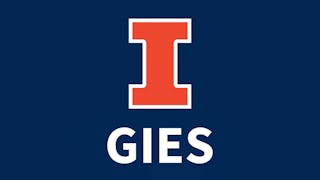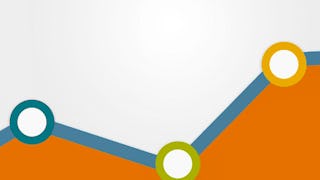Data about our browsing and buying patterns are everywhere. From credit card transactions and online shopping carts, to customer loyalty programs and user-generated ratings/reviews, there is a staggering amount of data that can be used to describe our past buying behaviors, predict future ones, and prescribe new ways to influence future purchasing decisions. In this course, four of Wharton’s top marketing professors will provide an overview of key areas of customer analytics: descriptive analytics, predictive analytics, prescriptive analytics, and their application to real-world business practices including Amazon, Google, and Starbucks to name a few. This course provides an overview of the field of analytics so that you can make informed business decisions. It is an introduction to the theory of customer analytics, and is not intended to prepare learners to perform customer analytics.

Enjoy unlimited growth with a year of Coursera Plus for $199 (regularly $399). Save now.

Customer Analytics
This course is part of Business Analytics Specialization



Instructors: Eric Bradlow
305,413 already enrolled
Included with
(11,966 reviews)
Skills you'll gain
Details to know

Add to your LinkedIn profile
13 assignments
See how employees at top companies are mastering in-demand skills

Build your subject-matter expertise
- Learn new concepts from industry experts
- Gain a foundational understanding of a subject or tool
- Develop job-relevant skills with hands-on projects
- Earn a shareable career certificate

There are 5 modules in this course
What is Customer Analytics? How is this course structured? What will I learn in this course? What will I learn in the Business Analytics Specialization? These short videos will give you an overview of this course and the specialization; the substantive lectures begin in Week 2.
What's included
2 videos1 assignment
In this module, you’ll learn what data can and can’t describe about customer behavior as well as the most effective methods for collecting data and deciding what it means. You’ll understand the critical difference between data which describes a causal relationship and data which describes a correlative one as you explore the synergy between data and decisions, including the principles for systematically collecting and interpreting data to make better business decisions. You’ll also learn how data is used to explore a problem or question, and how to use that data to create products, marketing campaigns, and other strategies. By the end of this module, you’ll have a solid understanding of effective data collection and interpretation so that you can use the right data to make the right decision for your company or business.
What's included
7 videos2 readings3 assignments
Once you’ve collected and interpreted data, what do you do with it? In this module, you’ll learn how to take the next step: how to use data about actions in the past to make to make predictions about actions in the future. You’ll examine the main tools used to predict behavior, and learn how to determine which tool is right for which decision purposes. Additionally, you’ll learn the language and the frameworks for making predictions of future behavior. At the end of this module, you’ll be able to determine what kinds of predictions you can make to create future strategies, understand the most powerful techniques for predictive models including regression analysis, and be prepared to take full advantage of analytics to create effective data-driven business decisions.
What's included
16 videos5 readings3 assignments
How do you turn data into action? In this module, you’ll learn how prescriptive analytics provide recommendations for actions you can take to achieve your business goals. First, you’ll explore how to ask the right questions, how to define your objectives, and how to optimize for success. You’ll also examine critical examples of prescriptive models, including how quantity is impacted by price, how to maximize revenue, how to maximize profits, and how to best use online advertising. By the end of this module, you’ll be able to define a problem, define a good objective, and explore models for optimization which take competition into account, so that you can write prescriptions for data-driven actions that create success for your company or business.
What's included
7 videos1 reading3 assignments
How do top firms put data to work? In this module, you’ll learn how successful businesses use data to create cutting-edge, customer-focused marketing practices. You’ll explore real-world examples of the five-pronged attack to apply customer analytics to marketing, starting with data collection and data exploration, moving toward building predictive models and optimization, and continuing all the way to data-driven decisions. At the end of this module, you’ll know the best way to put data to work in your own company or business, based on the most innovative and effective data-driven practices of today’s top firms.
What's included
8 videos2 readings3 assignments
Earn a career certificate
Add this credential to your LinkedIn profile, resume, or CV. Share it on social media and in your performance review.
Instructors


Offered by
Explore more from Business Strategy
 Status: Free Trial
Status: Free TrialUniversity of Colorado System
 Status: Free Trial
Status: Free TrialUniversity of Illinois Urbana-Champaign
 Status: Free Trial
Status: Free TrialMacquarie University
 Status: Preview
Status: PreviewUniversity of Virginia
Why people choose Coursera for their career




Learner reviews
11,966 reviews
- 5 stars
68.28%
- 4 stars
24.21%
- 3 stars
5.49%
- 2 stars
1.26%
- 1 star
0.74%
Showing 3 of 11966
Reviewed on Mar 23, 2021
Excellent for learning different types of analytics, the different tools, learning which type of analytics and tool to use in a specific situation. Furthermore how to implement analytics in business
Reviewed on Feb 5, 2019
Provides very good overview and understanding of cutomer analytics, how to collect data, measure, predict outcomes and what techniques to use in different scenarios. Highly recommend for beginners.
Reviewed on Oct 15, 2017
This course is designed with highly skilled faculties. The way they explains carry a lot of meaning in small format. One may easily understand without having any prior knowledge of this whole area.

Open new doors with Coursera Plus
Unlimited access to 10,000+ world-class courses, hands-on projects, and job-ready certificate programs - all included in your subscription
Advance your career with an online degree
Earn a degree from world-class universities - 100% online
Join over 3,400 global companies that choose Coursera for Business
Upskill your employees to excel in the digital economy
Frequently asked questions
To access the course materials, assignments and to earn a Certificate, you will need to purchase the Certificate experience when you enroll in a course. You can try a Free Trial instead, or apply for Financial Aid. The course may offer 'Full Course, No Certificate' instead. This option lets you see all course materials, submit required assessments, and get a final grade. This also means that you will not be able to purchase a Certificate experience.
When you enroll in the course, you get access to all of the courses in the Specialization, and you earn a certificate when you complete the work. Your electronic Certificate will be added to your Accomplishments page - from there, you can print your Certificate or add it to your LinkedIn profile.
Yes. In select learning programs, you can apply for financial aid or a scholarship if you can’t afford the enrollment fee. If fin aid or scholarship is available for your learning program selection, you’ll find a link to apply on the description page.
More questions
Financial aid available,


